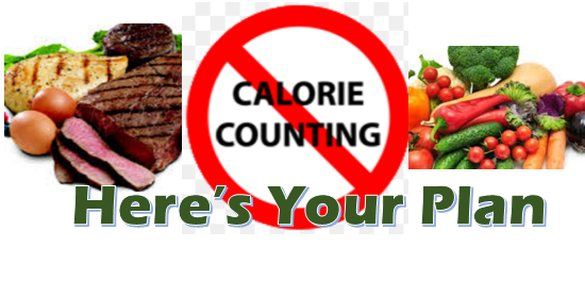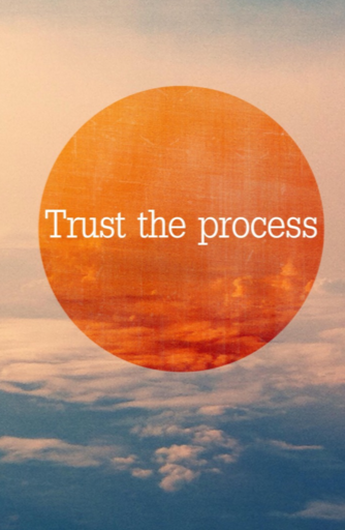Calorie counting is not some new fancy revelation in health and fitness.
In fact, you’ve probably done it before and not even realized it.
Tracking “food points”, macronutrients, serving sizes, and prescribed meal plans are all forms of counting calories.
On a fundamental level, all of the methods mentioned above are just forms of applying a standard metric to what it is you’re eating.
If you know me, or have read almost anything I’ve put out in the past, you’ll know I’m advocate of counting calories by the way of tracking macronutrients (proteins, carbs, and fats).
Every client I’ve ever had, and almost everyone who asks for nutrition and fat loss on the street will always hear my calorie-counting and macronutrient counting spiel.
It’s nothing glamorous.
It’s not hip, sexy, or exciting by any means.
But it works. Always has. Always will.
This doesn’t mean you should be a bean counting, calorie tracking Nazi about every piece of food that makes it’s way into your mouth.
In fact, I don’t think anybody should be counting and tracking EVERTYHING they eat.
That my friends, is an eating disorder based on obsessive compulsion.
But I’m not here to give you a Dr. Phil lecture.
Do I count my macros and count my macros everyday?
Certainly not.
Do I suggest you learn how to track macros and count your calories?
Of course!
Do I suggest you track macros and count calories the rest of your life?
Certainly not!
As much as I am a fan of applying a metric to the foods you eat, I’m an even bigger fan of having people move into an easier, and more intuitive approach to eating.
Most of the time, folks aren’t interested in learning how to track their foods and count their calories.
If you’re adamant about not counting calories, you’re going to need a game plan . A real game plan.
“Eating clean foods” just won’t cut it, and you’re going to have to have a better plan than that.
So let’s devise a way of eating that will help you lean out and lose some body fat if you’re not willing to get on board with counting calories.
In fact, you’ve probably done it before and not even realized it.
Tracking “food points”, macronutrients, serving sizes, and prescribed meal plans are all forms of counting calories.
On a fundamental level, all of the methods mentioned above are just forms of applying a standard metric to what it is you’re eating.
If you know me, or have read almost anything I’ve put out in the past, you’ll know I’m advocate of counting calories by the way of tracking macronutrients (proteins, carbs, and fats).
Every client I’ve ever had, and almost everyone who asks for nutrition and fat loss on the street will always hear my calorie-counting and macronutrient counting spiel.
It’s nothing glamorous.
It’s not hip, sexy, or exciting by any means.
But it works. Always has. Always will.
This doesn’t mean you should be a bean counting, calorie tracking Nazi about every piece of food that makes it’s way into your mouth.
In fact, I don’t think anybody should be counting and tracking EVERTYHING they eat.
That my friends, is an eating disorder based on obsessive compulsion.
But I’m not here to give you a Dr. Phil lecture.
Do I count my macros and count my macros everyday?
Certainly not.
Do I suggest you learn how to track macros and count your calories?
Of course!
Do I suggest you track macros and count calories the rest of your life?
Certainly not!
As much as I am a fan of applying a metric to the foods you eat, I’m an even bigger fan of having people move into an easier, and more intuitive approach to eating.
Most of the time, folks aren’t interested in learning how to track their foods and count their calories.
If you’re adamant about not counting calories, you’re going to need a game plan . A real game plan.
“Eating clean foods” just won’t cut it, and you’re going to have to have a better plan than that.
So let’s devise a way of eating that will help you lean out and lose some body fat if you’re not willing to get on board with counting calories.
Why Calories Counting is Your Best Option
Here’s my last attempt at trying to bring you back to the light that is calorie counting.
And also address the benefits of what you’ll be missing out on.
I kept that list pretty shorts, but let’s now take a short look at some of the issues on the other end of the spectrum that is “eating clean.”
When someone makes the decisions to finally go “all in” to lose some weight, they’ll follow some pretty vague and ambiguous parameters.
They’ll often look to Eat “Healthy”
This approach is known as a fear based approach. It’s based on the incorrect logic that there are specific foods in this universe that will instantly make you gain weight if you eat them.
These foods are commonly thought of as:
In reality, none of the things listed above can make you fat or gain weight. This is only the case when consumed in excess and calories exceed your daily energy maintenance.
The next approach most people take is following a fad diet plan.
Something like Paleao eating, Low carb, Vegan plans, Mediterrean diets, no gluten, no wheat, etc.
This isn’t to say the methods above are bad when it comes to improving your health and making changes in your appearance.
It’s better than nothing.
But there’s some issues with each of these approaches that should be taken into consideration.
The idea that deprivation or elimination of foods is the key and to getting and staying permanently lean becomes your sole mindset.
Sustaining your new lean lifestyle based on your diet becomes a problem.
Denying yourself of foods you enjoy will begin to become increasingly more difficult, and it could only be a matter of time before a binge happens and your “cheat meal” turns into a cheat day. Or worse, you fall off the wagon completely for a week or more.
Something of a vicious cycle ensures.
Deprivation is implemented.
So they’ll see results.
Then they crack due to the restriction.
Once they’re over their episode, they hop back on the wagon and start the cycle all over again, telling themselves they won’t screw it up again and have stronger will power.
Here’s my last attempt at trying to bring you back to the light that is calorie counting.
And also address the benefits of what you’ll be missing out on.
- You’ll understand how much you’re actually eating
- You can easily change your calorie target for your specific body goals
- Less food restrictions
- More food choices
- Ability to make smart food choices when faced with less than ideal meal options
- Stress less about foods
I kept that list pretty shorts, but let’s now take a short look at some of the issues on the other end of the spectrum that is “eating clean.”
When someone makes the decisions to finally go “all in” to lose some weight, they’ll follow some pretty vague and ambiguous parameters.
They’ll often look to Eat “Healthy”
- This approach leads them to thinking they should only eat “fad” and “superfoods”.
- Foods automatically become “good” or “bad” based on some arbitrary recommendation
- Restriction and elimination of certain types of foods based on catchy books, tv shows, or recommendations from a friend, relative, and even doctors.
This approach is known as a fear based approach. It’s based on the incorrect logic that there are specific foods in this universe that will instantly make you gain weight if you eat them.
These foods are commonly thought of as:
- Sugar
- Processed foods
- Wheat
- Gluten
- Carbs in general
- Fats in general
In reality, none of the things listed above can make you fat or gain weight. This is only the case when consumed in excess and calories exceed your daily energy maintenance.
The next approach most people take is following a fad diet plan.
Something like Paleao eating, Low carb, Vegan plans, Mediterrean diets, no gluten, no wheat, etc.
This isn’t to say the methods above are bad when it comes to improving your health and making changes in your appearance.
It’s better than nothing.
But there’s some issues with each of these approaches that should be taken into consideration.
The idea that deprivation or elimination of foods is the key and to getting and staying permanently lean becomes your sole mindset.
Sustaining your new lean lifestyle based on your diet becomes a problem.
Denying yourself of foods you enjoy will begin to become increasingly more difficult, and it could only be a matter of time before a binge happens and your “cheat meal” turns into a cheat day. Or worse, you fall off the wagon completely for a week or more.
Something of a vicious cycle ensures.
Deprivation is implemented.
So they’ll see results.
Then they crack due to the restriction.
Once they’re over their episode, they hop back on the wagon and start the cycle all over again, telling themselves they won’t screw it up again and have stronger will power.
Fat Loss Is Progressively Difficult
Every pound of body fat you lose makes the next one progressively more difficult.
If you’re someone who needs to lose 200 pounds, the first 100 will come with small habitual changes such as more walking, smarter meal choices, and eliminating snacking during the day.
It’s when the weight loss starts to slow down is where the approach needs to be fine-tuned.
Every pound of body fat you lose makes the next one progressively more difficult.
If you’re someone who needs to lose 200 pounds, the first 100 will come with small habitual changes such as more walking, smarter meal choices, and eliminating snacking during the day.
It’s when the weight loss starts to slow down is where the approach needs to be fine-tuned.
Enter: Calorie Counting.
The real reason “eating clean” and only eating “healthy” foods works so well (at the start) is that you are eating less calories by default and not even realizing it.
You’re eliminating junk food, fast foods, minimizing snacking, not drinking your calories, and probably exercising a bit more.
So of course you’ll lose weight!
There is a correlation between eating these “clean” and healthy foods, but it’s not the actual causation.
It’s certainly easy to think these healthy foods are the cause of the weight loss because you’ve seen some progress, but in actuality, you’re just consuming fewer calories over an extended period of time.
Counting calories will show you exactly how this weight loss is happening.
But enough about that. I think I’ve made my point about counting calories.
The real reason “eating clean” and only eating “healthy” foods works so well (at the start) is that you are eating less calories by default and not even realizing it.
You’re eliminating junk food, fast foods, minimizing snacking, not drinking your calories, and probably exercising a bit more.
So of course you’ll lose weight!
There is a correlation between eating these “clean” and healthy foods, but it’s not the actual causation.
It’s certainly easy to think these healthy foods are the cause of the weight loss because you’ve seen some progress, but in actuality, you’re just consuming fewer calories over an extended period of time.
Counting calories will show you exactly how this weight loss is happening.
But enough about that. I think I’ve made my point about counting calories.
So if you STILL don’t have any desire to count, here’s your approach.
Before we get into this short little plan, it’s imperative to remember that calories DO count.
Even though you are not actively tracking them, they matter.
Calories are the measure of energy content that food contains.
Here’s a simplified explanation.
Consume too many calories- gain weight.
Consume fewer calories than you expend – lose weight.
It makes almost no difference (on an energy level) whether these calories come from “superfoods” or Twinkies.
The change in body mass and body fat is based on energy balances. There is no arguing that.
Consistency in the diet plan will be paramount here, as manipulating the parts of the diet (food) will be what is making the changes to your weight and physique.
So here’s the layout.
NUMBER OF MEALS IN A DAY
This one is based solely on what you’re comfortable with.
Some people prefer to eat 3 times a day, which is perfectly fine.
Others might like to eat 9 meals a day, which is fine as well.
But keep in mind, the more meals you eat, the smaller they should be.
Fewer meals means they can be larger.
This recommendation seems to work best for most people
-OR delay first meal until lunch, mid-day snack, and dinner
-OR delay first meal, lunch, dinner, pre-bed snack
The reason for holding off on breakfast is mostly for convenience. People tend to be in a hurry to get to work early in the day and often don’t have an appetite. Why force yourself to scarf down a meal you don’t even want and take extra time out of your morning routine?
By all means you CAN have breakfast if you’d like and hold off on lunch/dinner, but I’ve found that most people feel better and have increased energy levels if they have a mid-day meal.
But it’s all based on YOUR personal preference.
Before we get into this short little plan, it’s imperative to remember that calories DO count.
Even though you are not actively tracking them, they matter.
Calories are the measure of energy content that food contains.
Here’s a simplified explanation.
Consume too many calories- gain weight.
Consume fewer calories than you expend – lose weight.
It makes almost no difference (on an energy level) whether these calories come from “superfoods” or Twinkies.
The change in body mass and body fat is based on energy balances. There is no arguing that.
Consistency in the diet plan will be paramount here, as manipulating the parts of the diet (food) will be what is making the changes to your weight and physique.
So here’s the layout.
NUMBER OF MEALS IN A DAY
This one is based solely on what you’re comfortable with.
Some people prefer to eat 3 times a day, which is perfectly fine.
Others might like to eat 9 meals a day, which is fine as well.
But keep in mind, the more meals you eat, the smaller they should be.
Fewer meals means they can be larger.
This recommendation seems to work best for most people
- 3 Meals tends to be best based on convenience
-OR delay first meal until lunch, mid-day snack, and dinner
-OR delay first meal, lunch, dinner, pre-bed snack
The reason for holding off on breakfast is mostly for convenience. People tend to be in a hurry to get to work early in the day and often don’t have an appetite. Why force yourself to scarf down a meal you don’t even want and take extra time out of your morning routine?
By all means you CAN have breakfast if you’d like and hold off on lunch/dinner, but I’ve found that most people feel better and have increased energy levels if they have a mid-day meal.
But it’s all based on YOUR personal preference.
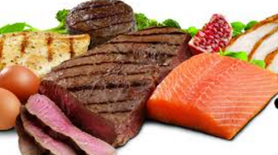
PLAN YOUR PROTEIN
You need more protein.
Yes, you.
Just about every client I’ve ever had has come to me with the issue of not getting enough protein in their diet.
If you’re training with weights (which you should be at this point) you’re going to need more protein.
If you’re dieting to lose weight and body fat, you’re going to need more protein.
This means at EVERY MEAL you have during the day.
Protein will be the focal point of your meals, and the rest (carbs and fats) will be built around your protein.
-Steak or flank beef
-Salmon or other fatty fish
-Chicken thighs and/or legs
-Turkey breast
-Lean Deli Meats
-Tilapia or Cod
-Lean pork
Protein shakes are also an option here, but should be utilized mostly if you feel you are not getting adequate protein. Or for after a workout if you’re not hungry or you’re limited on time and can’t get a whole-food meal in.
You need more protein.
Yes, you.
Just about every client I’ve ever had has come to me with the issue of not getting enough protein in their diet.
If you’re training with weights (which you should be at this point) you’re going to need more protein.
If you’re dieting to lose weight and body fat, you’re going to need more protein.
This means at EVERY MEAL you have during the day.
Protein will be the focal point of your meals, and the rest (carbs and fats) will be built around your protein.
- For at least 1 meal, choose a “fattier” cut of meat. These include:
-Steak or flank beef
-Salmon or other fatty fish
-Chicken thighs and/or legs
- Your other 2 meals should be lean protein sources such as:
-Turkey breast
-Lean Deli Meats
-Tilapia or Cod
-Lean pork
Protein shakes are also an option here, but should be utilized mostly if you feel you are not getting adequate protein. Or for after a workout if you’re not hungry or you’re limited on time and can’t get a whole-food meal in.
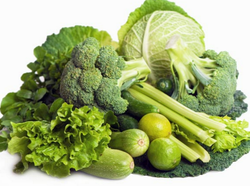
DON’T FORGET YOUR VEGETABLES
If you’re looking to diet down with this program to lose some body fat, veggies are going to be the greatest thing in the world.
They’ll fill you up quite nicely and keep you feeling full and don’t have very many calories whatsoever.
They are imperative for fat loss.
Not because they burn fat or any kind of nonsense like that.
But because they’ll make the fat loss process a lot easier and tastier.
Be sure to focus on leafy, green vegetables with EVERY meal.
Also be aware of sautéed or buttered veggies at restaurants.
-Spinach
-Lettuce
-Kale
-Cauliflower
-Mushrooms
-Onions
-Tomatoes
-Carrots
-Peppers
-Squashes
If you’re looking to diet down with this program to lose some body fat, veggies are going to be the greatest thing in the world.
They’ll fill you up quite nicely and keep you feeling full and don’t have very many calories whatsoever.
They are imperative for fat loss.
Not because they burn fat or any kind of nonsense like that.
But because they’ll make the fat loss process a lot easier and tastier.
Be sure to focus on leafy, green vegetables with EVERY meal.
Also be aware of sautéed or buttered veggies at restaurants.
- Veggies to include are:
-Spinach
-Lettuce
-Kale
-Cauliflower
-Mushrooms
-Onions
-Tomatoes
-Carrots
-Peppers
-Squashes
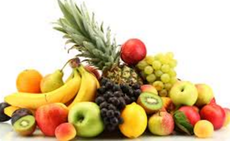
HAVE SOME FRUITS
Fruits are not the equivalent to veggies here, for a couple of reasons.
Fruit has a higher calories content than veggies and won’t leave you feeling as full as vegetables might.
It will provide good amounts of vitamins and minerals, so be sure to include a small amount here and there.
PLAN YOUR CARBOHYDRATES CAREFULLY
A lot of people will tend to drastically cut out carbohydrates almost entirely to ramp up their fat loss efforts.
Not a great idea, especially if you’re someone looking to make a sustainable change in your life and you’re working out with weights or doing some type of resistance training.
Carbohydrates are delicious. There’s no arguing that. This makes them quite easy to over-eat, and they do not fill you up as easily as proteins and fats will.
This is why it becomes smart to plan when and what carbohydrates you’re going to be eating ahead of time.
Your carbs are better off being from whole food choices and less from processed or sugary sources.
Here’s how your carbohydrate consumption should play out:
-Rice (white, brown, jasmine, whole grain, it’s your choice)
-Potatoes (white, sweet, yams, etc)
Folks will tend to argue that certain types of rices (brown) or potatoes (sweet) are inherently healthier and will be better choices.
There is no validity to any of that.
In a mixed meal of carbs, fat, and protein, the physiology of digestion will negate the “lower insulin” (or whatever process you’d like to say each food is superior food) effects.
So choose the types of carbohydrates you’ll enjoy.
Fruits are not the equivalent to veggies here, for a couple of reasons.
Fruit has a higher calories content than veggies and won’t leave you feeling as full as vegetables might.
It will provide good amounts of vitamins and minerals, so be sure to include a small amount here and there.
PLAN YOUR CARBOHYDRATES CAREFULLY
A lot of people will tend to drastically cut out carbohydrates almost entirely to ramp up their fat loss efforts.
Not a great idea, especially if you’re someone looking to make a sustainable change in your life and you’re working out with weights or doing some type of resistance training.
Carbohydrates are delicious. There’s no arguing that. This makes them quite easy to over-eat, and they do not fill you up as easily as proteins and fats will.
This is why it becomes smart to plan when and what carbohydrates you’re going to be eating ahead of time.
Your carbs are better off being from whole food choices and less from processed or sugary sources.
Here’s how your carbohydrate consumption should play out:
- Have a small serving of whole food carbohydrates with each meal (3). Options include:
-Rice (white, brown, jasmine, whole grain, it’s your choice)
-Potatoes (white, sweet, yams, etc)
Folks will tend to argue that certain types of rices (brown) or potatoes (sweet) are inherently healthier and will be better choices.
There is no validity to any of that.
In a mixed meal of carbs, fat, and protein, the physiology of digestion will negate the “lower insulin” (or whatever process you’d like to say each food is superior food) effects.
So choose the types of carbohydrates you’ll enjoy.
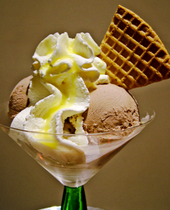
IT’S OKAY TO HAVE TREATS, JUST PLAN THEM WISELY
Depriving yourself of fun foods that you enjoy forever is not a smart move here.
The longer you try to restrict yourself from foods you (or someone else) deems as “bad” and “unhealthy”, the more you’ll inevitably begin to crave them.
The best thing you can do here Is know when to plan the times you’d like to enjoy these treats.
The way to do this is substituting the carbohydrates you would be eating for the day for the specific treat foods you’re longing to have.
Here’s what you could do:
-Ice Cream
-A slice of pizza
It’s also best to plan these foods around social events.
If you know you have a wedding to be at, or maybe happy hour with some co-workers, make this the time to enjoy these foods.
Depriving yourself of fun foods that you enjoy forever is not a smart move here.
The longer you try to restrict yourself from foods you (or someone else) deems as “bad” and “unhealthy”, the more you’ll inevitably begin to crave them.
The best thing you can do here Is know when to plan the times you’d like to enjoy these treats.
The way to do this is substituting the carbohydrates you would be eating for the day for the specific treat foods you’re longing to have.
Here’s what you could do:
- Twice a week (maximum), let yourself have something you’ve restricted and something you really enjoy. Foods such as:
-Ice Cream
-A slice of pizza
It’s also best to plan these foods around social events.
If you know you have a wedding to be at, or maybe happy hour with some co-workers, make this the time to enjoy these foods.
STICK WITH YOUR PLAN AND TRUST THE PROCESS
Starting a new diet or eating plan isn’t too difficult, it’s staying on track and not falling off the wagon that’s the difficult part.
This plan of not having to count calories is still based on calories, but it takes the tedious and “hard” work out of it.
Things will come up and you’ll be challenged. That’s normal and it will happen.
If you happen to stray from plan for a day or two, don’t sweat it.
Just pick up where you left on and don’t beat yourself up about it.
Simple as that.
If this plan is giving your current way of eating a large overhaul (elimanting sodas, sweets, processed foods, ect) expect to a large amount of weight loss at first.
If you’re someone who’s been pretty good about making smarter food choices and have had some experience with counting calories or diets in the past, this will still be quite beneficial for you.
If after a few weeks/months of dieting with the plan, adjustments may need to be made to continue seeing weight loss progress.
-Reduce the fattier protein sources (salmon, beef, pork) for leaner cuts of meats such as chicken breasts, white fish, shrimp, and tuna fish.
-Make sure you’re not snacking during the day. Be honest with yourself. Those couple of handful of mixed nuts you’re having at the office might be sabotaging your progress.
Ultimately, counting calories will be beneficial to everyone when they go into the process with the proper state of mind.
For some people, it may not be what they can handle in their lives at the time. And there’s nothing wrong with that.
The next best thing they can do is understand how to make proper food choices with a plan like this (based on calories).
So give this a try, and hopefully it’s the jump start you need to find some motivation to finally get fit and improve your physique FOR GOOD.
If you like the plan, or perhaps prefer a more detailed, customized plan especially for YOU, feel free to contact me and we can get you rolling.
Best of luck, and thanks for reading.
Starting a new diet or eating plan isn’t too difficult, it’s staying on track and not falling off the wagon that’s the difficult part.
This plan of not having to count calories is still based on calories, but it takes the tedious and “hard” work out of it.
Things will come up and you’ll be challenged. That’s normal and it will happen.
If you happen to stray from plan for a day or two, don’t sweat it.
Just pick up where you left on and don’t beat yourself up about it.
Simple as that.
If this plan is giving your current way of eating a large overhaul (elimanting sodas, sweets, processed foods, ect) expect to a large amount of weight loss at first.
If you’re someone who’s been pretty good about making smarter food choices and have had some experience with counting calories or diets in the past, this will still be quite beneficial for you.
If after a few weeks/months of dieting with the plan, adjustments may need to be made to continue seeing weight loss progress.
- Here’s what you could do to make these changes:
-Reduce the fattier protein sources (salmon, beef, pork) for leaner cuts of meats such as chicken breasts, white fish, shrimp, and tuna fish.
-Make sure you’re not snacking during the day. Be honest with yourself. Those couple of handful of mixed nuts you’re having at the office might be sabotaging your progress.
Ultimately, counting calories will be beneficial to everyone when they go into the process with the proper state of mind.
For some people, it may not be what they can handle in their lives at the time. And there’s nothing wrong with that.
The next best thing they can do is understand how to make proper food choices with a plan like this (based on calories).
So give this a try, and hopefully it’s the jump start you need to find some motivation to finally get fit and improve your physique FOR GOOD.
If you like the plan, or perhaps prefer a more detailed, customized plan especially for YOU, feel free to contact me and we can get you rolling.
Best of luck, and thanks for reading.
